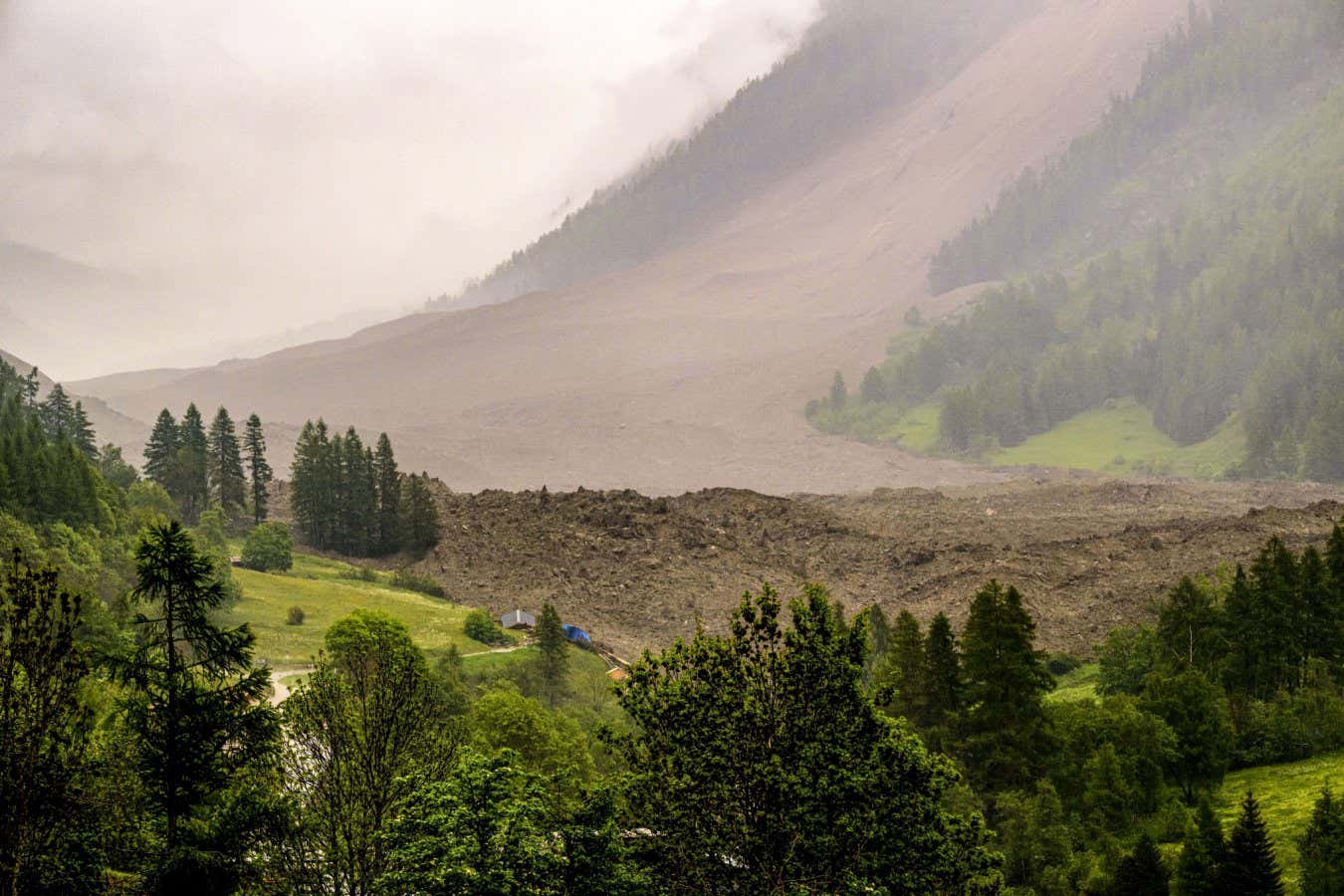Now Reading: Glacier Collapse Sparks Landslide, Burying Swiss Village
-
01
Glacier Collapse Sparks Landslide, Burying Swiss Village
Glacier Collapse Sparks Landslide, Burying Swiss Village

Fast Summary
- A massive portion of the Birch glacier in the Swiss Alps collapsed on 28 May, causing a landslide that buried the village of Blatten under mud, ice, and rocks.
- Authorities had warned about cracks in the glacier weeks prior, leading to the evacuation of villagers and livestock earlier this month.
- The collapse caused a magnitude 3.1 earthquake and blocked the Lonza river nearby, increasing flood risks.
- No casualties have been reported; however, one person remains missing as per officials’ updates during a press conference held on 28 May.
- Meaningful damage has occurred: Blatten is largely buried under debris alongside destruction of forests in surrounding areas.
- The event highlights challenges linked to climate-driven instability in Alpine glaciers. Between 2022-23, Swiss glaciers lost 10% of thier volume due to rising temperatures.
- Experts emphasize more research is needed to quantify potential frequency shifts in such rare events related to climate change.
Indian Opinion Analysis
The collapse of switzerland’s Birch glacier serves as a critical reminder for mountainous regions globally-India included-of mounting vulnerabilities tied directly or indirectly to climate change. Notably for India’s Himalayan region, which harbors extensive glacial systems prone to similar instability from warming temperatures and meltwater accumulation over time.
Situations like these underline how local communities living near high-risk zones must prioritize proactive evacuation measures and disaster preparedness when early warning signals arise. India’s investment into advanced monitoring technologies-such as satellite surveillance or seismic sensors-is crucial for understanding long-term trends akin to those observed internationally.
Lastly, while scientific uncertainty lingers over climate change’s direct influence on extreme events’ frequency (as indicated by experts regarding Switzerland’s landslide), India’s policymakers must adopt robust strategies now rather than waiting for definitive proof about cause-effect linkages. Strengthening environmental resilience today will ensure safer outcomes tomorrow across geo-impact hotspots like Uttarakhand or Himachal Pradesh.

























